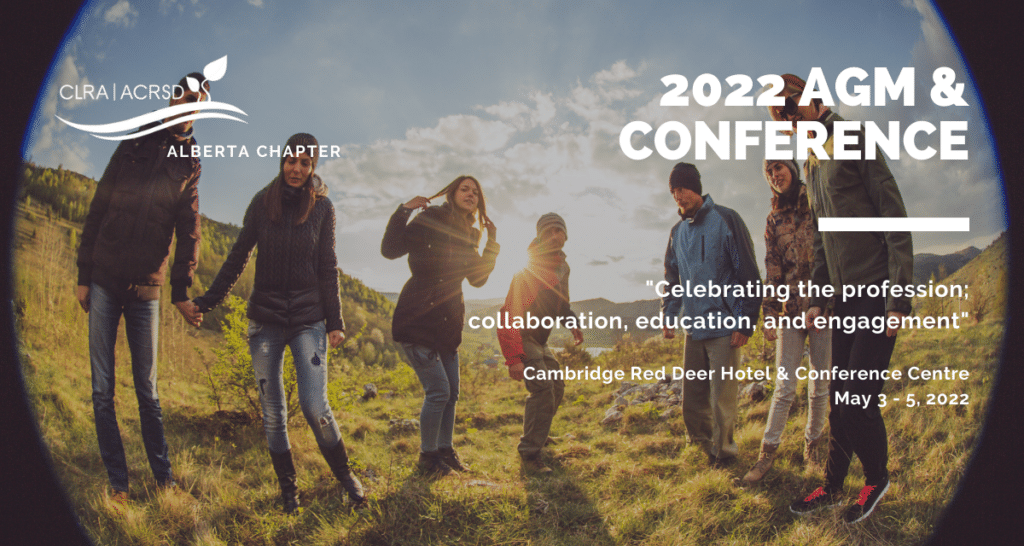ESAA ANNUAL GENERAL MEETING OF MEMBERS NOTICE
NOTICE IS HEREBY GIVEN that the Annual General Meeting of the Members of the Association will be held at the Hyatt Regency Calgary, on April 20th, 2022, at the hour of 3:00 pm for the following purposes:
- to approve the minutes of Members dated April 7th, 2021;
- to receive the report of the President;
- to receive the report of ESAA Management;
- to receive the report of the Treasurer;
- to vote on a special resolution to amend the Associations Bylaws (as attached)
- to appoint Auditors;
- to appoint/elect Directors; and
- the transaction of such further and other matters as may properly be brought before the meeting or any adjournment thereof.
Full members have the right to appoint a proxy, who needs not to be a member, to exercise the same voting rights that the member appointing such proxy would be entitled to exercise if present at the meeting.
The location of the meeting is Hyatt Regency Calgary
Dated at the City of Edmonton, in the Province of Alberta, this _24th___ day of _February_, 2022.
Full details can be found at: https://esaa.org/2022-esaa-agm/
ESAA Board of Directors – Call for Nominations
The ESAA Board of Directors is pleased to announce the initial slate of candidates for the upcoming Board of Directors election to be held at the ESAA AGM on April 20th, 2022 at the Hyatt Regency Calgary.
There will be two (2) positions open for the ESAA Board of Directors, each for a three (3) year term.
If you would like to be included on the list of candidates for the ESAA Board of Directors and are a representative of a full ESAA Member, please submit 6 letters of support* by no later than March 18th, 2022, to the ESAA Office via e-mail: [email protected].
Proposed List of Candidates
- Tyler Barkhouse, Dillon Consulting (I)
- Adam Dunn, Earthmaster Environmental Strategies
- Scott Purves, Matrix Solutions
- Cory Sommer, Millennium EMS Solutions
(I) Incumbent
(*) Letters of support must be from ESAA Members and only one letter per member.
The ESAA photo contest has returned.
Do you work for an ESAA Member company? If so, they you are eligible to enter the 2022 ESAA Photo Contest.

The theme for 2022 is ‘Canadian Wildlife.’ No matter how big or small all of Canada’s wildlife is simply amazing. Just remember to give wildlife space, don’t stress animals and don’t submit photos of any nesting wildlife. Full details below. Submission deadline – August 1st, 2022.
Prizes:
- 1st Place – $250 Posterjack Gift Certificate
- 2nd Place – $100 Posterjack Gift Certificate
- The top 12 photos will be included in the first annual ESAA calendar.
Full contest details, rules, submission upload link and more can be found at: https://esaa.org/
New federal fund to reinvest proceeds from pollution pricing
(Source: EnvironmentJournal.ca) The Government of Canada has launched the Output-Based Pricing System Proceeds Fund, a new program to support industrial initiatives that reduce greenhouse gas (GHG) emissions and deploy clean technology and green energy.
The program will use the proceeds of Canada’s carbon pollution pricing system for heavy industry—collected in Manitoba, New Brunswick, Ontario, and Saskatchewan—to support low carbon technology projects in those provinces. Approximately $161 million from the 2019 compliance period will go towards projects that reduce carbon pollution.
“A healthy environment and a healthy economy go together. The Government of Canada is reinvesting all direct proceeds from the federal carbon pollution pricing system right back to the provinces of origin, as promised,” said Steven Guilbeault, Minister of Environment and Climate Change. “This new Output-Based Pricing System Proceeds Fund will cut pollution, support workers, and keep us on track to reach our emission reduction goals.”
The Output-Based Pricing System Proceeds Fund has two program streams:
The Decarbonization Incentive Program
The Decarbonization Incentive Program (DIP) is a merit-based program to support clean technology projects that will help decarbonize industrial sectors over the long term and reduce GHG emissions. The amount of funding available through the DIP for each province varies depending on the carbon pricing proceeds collected from facilities in each respective province where the federal OBPS currently applies or applied in the past. The DIP is currently accepting applications for project funding to return OBPS proceeds collected in the 2019 compliance period.
The Future Electricity Fund
The Future Electricity Fund (FEF) will support clean electricity projects and/or programs. Proceeds collected from electricity generating facilities covered by the OBPS (such as utilities) will be returned through funding agreements with governments of jurisdictions where the federal carbon pollution pricing system currently applies or applied in the past.
To mark the launch of the new program, Guilbeault and Viviane Lapointe, Member of Parliament for Sudbury, participated in virtual tours of Vale Mining’s operations in Sudbury Ontario, and NOVA Chemicals, to see first-hand their latest initiatives to reduce operating emissions.
“Since the 1970’s, Sudbury has seen an environmental revival, as a result of our vital industries rising to the challenges and incentives that come with forward-thinking government policy, regulation and investment,” said Lapointe. “Sudbury and Canada are recognized global leaders in responsible and sustainable mining. The world needs more Canada, and we will continue to bring this expertise to the world.”
The OBPS is the regulatory trading system for industry under Canada’s carbon pollution pricing system. The federal OBPS is designed to ensure there is a price incentive for industrial emitters to reduce their GHG emissions and spur innovation. It helps to maintain competitiveness for industries that compete internationally by protecting against the risk of industrial facilities moving from one jurisdiction to another to avoid paying a price on carbon pollution (known as “carbon leakage”).
The federal government is currently reviewing the federal OBPS. A key change being proposed is the addition of an annual tightening rate on performance standards. Consultations closed January 24, and proposed federal regulations will be published in the first half of this year, with final regulations coming into force next January.
Government of Canada consulting on new measures to require certain plastic items be made of at least 50 percent recycled material
Plastic pollution litters communities, waterways and the natural spaces Canadians love, and is a collective problem that must be addressed. Every year, Canadians throw away three million tonnes of plastic waste, less than 10 percent of which is recycled. This means that the vast majority of plastic waste produced in Canada ends up in landfills or enters the environment as pollution where it poses a risk to wildlife and their habitat. That is why the Government of Canada is committed to increasing the recycled content in certain plastic products and packaging to at least 50 percent by 2030.
To that end, the Minister of Environment and Climate Change, the Honourable Steven Guilbeault, today launched a consultation process on the development of new regulations that will set minimum percentage recycled content requirements for certain items made of plastic. The proposed regulations would reduce the amount of plastic entering landfills and the environment by strengthening demand for recycled plastics. This will drive improvements to recycling systems and product design, reduce greenhouse gas emissions, and promote a circular economy for plastics.
The Government of Canada is taking ambitious action to reduce plastic pollution through a comprehensive approach that addresses the entire life cycle of plastics. Alongside provinces and territories, it is moving forward on a Canada-wide strategy to achieve zero plastic waste by 2030. In addition to requiring recycled content in certain plastic products and packaging, this strategy includes working with provinces and territories to make plastics producers responsible for their waste. Today’s consultation launch is an important component of that strategy, and will help advance the government’s comprehensive approach to reduce plastic waste and pollution.
Canadians and stakeholders are invited to comment, before March 14, 2022, on proposed measures that would set minimum recycled content requirements for certain plastic manufactured items. The Government is targeting publication of proposed regulations by the end of 2022.
Nova Scotia mining company ordered to pay $125K for offence under the Fisheries Act
Canadians value a safe and clean environment. Environment and Climate Change Canada’s (ECCC) enforcement officers strive to ensure that businesses and individuals comply with the ECCC-administered laws and regulations that protect Canada’s natural environment.
On February 3, 2022, Atlantic Mining NS Inc. (previously Atlantic Mining NS Corp.) pleaded guilty in the Provincial Court of Nova Scotia to one count of contravening the Fisheries Act. The company was fined $125,000, of which $120,000 will be directed to the Government of Canada’s Environmental Damages Fund, with the remaining $5,000 being a court fine. The company was also fined $125,000 under Nova Scotia’s Environment Act, $120,000 of which will be directed to Indigenous environmental organizations in Nova Scotia, with the remaining $5,000 being a court fine.
In June 2019, an environmental inspector with Nova Scotia Environment notified ECCC of ongoing sedimentation and erosion issues at the Touquoy mine site near Middle Musquodoboit, Nova Scotia.
An investigation by ECCC enforcement officers determined that there were seven separate incidents of unauthorized deposits of deleterious substances into water frequented by fish at the Touquoy mine site in 2018 and 2019. The company failed to immediately collect samples from the area for acute lethality testing and failed to report the results to ECCC following the incidents, as required by the Metal and Diamond Mining Effluent Regulations under the Fisheries Act.
In addition to the fine, an order was issued under section 79.2 of the Act, requiring the corporation to carry out a number of actions to improve its response to future incidents. The company must hire a qualified consultant to develop and deliver training to staff on the Fisheries Act, emergency response surface sampling and other environmental response responsibilities. They must also implement a “train the trainer” program to provide training to contractors and employees on environmental topics, and ensure adequate testing supplies are in all vehicles used on site to collect samples for acute lethality testing at the time of an incident.
As a result of this conviction, the company’s name will be added to the Environmental Offenders Registry.
Water contamination and ravens spreading garbage: Concerns linger over Iqaluit’s new landfill
(Source: CBC News) The City of Iqaluit is getting closer to building its new landfill and waste transfer station.
But not all councillors are on board with the current plans, citing sustainability, litter and contamination concerns.
When the new landfill and waste transfer station was announced in 2018, it was supposed to be operational by 2020. But the deadline was pushed back — first to 2023, now to 2025.
The city’s current landfill is at capacity. Former mayor Madeleine Redfern called it an “environmental disaster,” and announced the new $35 million facility during her term.
But since that announcement, the price of construction has gone up, and many aspects of the original plan have been removed or adjusted.
Limited access to reusable materials
Originally, the new landfill was supposed to include a building for a reuse centre, where residents could come and scavenge for materials to build cabins or look for motor parts. But the budget will only allow for a small building or a sea-can for this purpose.
“When I hear of a sea-can as an option for a reuse centre, that’s wholly inadequate and it’s not acceptable to me,” said councillor Kyle Sheppard.
Sheppard says the reuse centre is a critical part of the project, and access to reusable materials is important to residents. He says access to these things at the current dump is unsafe and the city needs a way of making materials available safely.
“I would hate to see our residents lose access to all of that and have additional waste going to the waste storage site,” said Sheppard.
Other items that have been removed from the plans are a pelletizer — which would cut up cardboard and wood that could be burned to heat the sorting facility — a landfill perimeter fence and a leachate treatment system.
No plan to treat contaminated water
Leachate is created when garbage contaminates snow and rain. It is currently unknown how the city will remediate the leachate created at the new dump.
For now, plans say the contaminated water will be captured in a storage lagoon at the dump, which some experts say might not be enough to handle the problem.
“We don’t necessarily know the strength or how contaminated this runoff water will be,” said Erik Marko, a project manager with Collier Project Leaders.
“It’s difficult to design a treatment process that is appropriate for what we specifically will be dealing with in this case.”
The current plan is to store the leachate in the lagoon for a few years until the city knows what is appropriate for treatment. If the lagoon fills, it will need to be transferred to the wastewater treatment plant.
But by the time that happens, it will be a new mayor and council’s problem. Future city administrations will have to find funding and solutions to deal with the leachate.

The orginal landfill plan budgeted about $100,000 for a leachate treatment system at the dump — which Scott Kyle of Dillon Consulting believes was a notable underestimate from the start. He says a treatment system would actually cost between $3 and $5 million.
‘Serious problems with ravens:’ Mayor
Several councillors also expressed concern about litter polluting the surrounding area.
“We have a serious problem with ravens, always,” said Mayor Kenny Bell. “They will and can get through those bails.
“I want to know how we are going to deal with that so the garbage isn’t all over our beautiful land.”
A six-foot fence to catch loose litter would solve that problem — but all councillors were in agreement that the currently-planned fence isn’t high enough.
Chair of the Engineering and Public Works committee Romeyn Stevenson says most landfills have cleanup programs to deal with surrounding garbage.
“It happens — landfills blow litter — but we have been weirdly accustomed to allowing it to just go out onto the ice and go out onto the road and stay in the ditch and carry on in storms,” he said.
Stevenson says in the past the city has obtained government funding to have high school students pick up garbage. But there is no ongoing municipal program for garbage cleanup.
Counc. Joanasie Akumalik says he has reservations about this project.
” I [would] rather that somebody go back to the drawing board,” said Akumalik.
But the project has been approved through the city’s capital budget, and the construction of the road to where the landfill will be built has already started.
This spring, the city plans to issue two tenders for the project.
At an Engineering and Public Works committee of the whole meeting Monday, Ketih Barns of Dillon Consulting Limited said the tenders must be granted by May in order to start construction this summer.
Toxic dumping grounds that still feed into Lake Michigan among the sites to benefit from ‘game-changing’ funding boost
(Source: Phys.org) Pollution hot spots including toxic dumping grounds that still feed into Lake Michigan are among the sites that stand to benefit from a $1 billion boost in funding for cleaning up the Great Lakes.
The additional funds for Great Lakes restoration from the bipartisan infrastructure plan will largely bankroll work at some of the most contaminated sites throughout the region, the U.S. Environmental Protection Agency said Thursday.
“This investment will be a game-changer in the effort to clean up pollution that has poisoned local drinking water and threatened the health of communities,” Laura Rubin, director of the Healing Our Waters – Great Lakes Coalition, said in a statement.
The funding will directly support 11 sites listed as “areas of concern,” including the Grand Calumet River in northwest Indiana. The Grand Calumet, which includes the Indiana Harbor and Ship Canal, still hosts sediment containing likely carcinogens, heavy metals and various toxins that threaten humans and wildlife—and flows into Lake Michigan.
In 1987, the United States and Canada designated 43 sites as “areas of concern,” with 31 in the United States. Criticism of the slow cleanup pace dates back decades, as years went by after the designations without any of the hot spots officially making it off the list. Six sites have been delisted to date.
In the Grand Calumet, work could be complete between 2027 and 2030, according to Thursday’s announcement, making the site one of 22 out of the remaining 25 in the United States to reach that milestone by the end of the decade. The Grand Calumet could be officially delisted, at the earliest, in 2031.
Waukegan Harbor, Illinois’ only area of concern, is being monitored following a 30-year, $150 million cleanup effort. The site could be delisted between now and 2026.
The additional funds put toward the degraded sites “will allow for a major acceleration of progress,” according to Thursday’s news release.
With the midterm elections ahead, President Joe Biden highlighted the Great Lakes funding during a Thursday visit to Lorain, Ohio—a state with three areas still listed—with EPA Administrator Michael Regan.
“The Great Lakes are a vital economic engine and an irreplaceable environmental wonder, supplying drinking water for more than 40 million people, supporting more than 1.3 million jobs, and sustaining life for thousands of species,” Regan said in the news release.
As part of the bipartisan infrastructure plan, the additional $1 billion in funding across five years was included for the Great Lakes Restoration Initiative, a program implemented in 2010 that has since supported more than 6,000 projects to address problems from industrial pollution and habitat loss to toxic algae blooms and invasive species.
More detailed information on project funding is expected in the coming months.
The billion-dollar investment can ideally free up funds to tackle more projects on the Great Lakes, said Don Jodrey, director of Federal Government Relations with the nonprofit Alliance for the Great Lakes. Areas of concern have received a share of annual funding, but, Jodrey said, “It’s expensive to clean up legacy pollution.”
“We’re at a point where we’re nearing the end of the major cleanup,” he said. “That’s my hope.”
State and local officials said the investment was an important step toward protecting the Great Lakes and communities affected by environmental injustice. The EPA said the $1 billion will be distributed in line with the Biden administration initiative to deliver at least 40% of benefits from major federal investments to underserved communities.
In a statement, Waukegan Mayor Ann Taylor said the city is “an environmental justice community of nearly 90,000 residents on the shores of Lake Michigan.” Delisting will support redevelopment and “ensure a future with clean water for the benefit of our community and, ultimately, the entire Great Lakes region,” Taylor said.
The three hot spots with work remaining past 2030 include the Kalamazoo River and the Saginaw River and Bay in Michigan, and the St. Lawrence River in New York.
At Waukegan Harbor, more than 100,000 cubic yards of PCB-laden sediment was dredged up at the site of the former Outboard Marine Corp. PCBs, or polychlorinated biphenyls, are linked to cancer, among other serious health effects, and can stick around long after they’re released into the environment.
Candace May, Lake County outreach coordinator for Faith in Place, an environmental justice nonprofit that aims to bring together people of diverse faiths, said seeing Waukegan Harbor finally delisted will hopefully mitigate some harm that’s been done to neighboring communities of color.
And it might give a greater piece of mind when stepping into the water on hot summer days.
“I think it’s not going to fix everything but it’s a step in the right direction,” May said. “There has to be restoration. There can no longer be, oh, I’m sorry, here’s a Band-Aid.”
As for the overall effort, May said anti-racism efforts are becoming part of the national consciousness.
“It’s the right thing to do,” May said. “It should’ve been done long ago.”
Officials were expected to gather Friday in Waukegan to mark the investment.
“For so many years, corporations abused the lake in Waukegan to the detriment of the people who live in Waukegan and the general area,” said Illinois U.S. Rep. Brad Schneider. “It will be good for the people living there. It will be good for the local businesses.”
The Grand Calumet River will be a heavier lift. The industrial dumping ground was found to house toxic PCBs and polycyclic aromatic hydrocarbons, or PAHs, along with heavy metals including mercury and lead, and oily muck. An Army Corps official deemed the mixture “sediments from hell” in a 1993 Tribune story on the pollution.
There are millions of orphaned gas and oil wells leaking methane in the U.S. — plugging them will cost billions
But those wells don’t last forever. In fact, a well only produces a significant quantity of natural gas for between 20 to 40 years.
After that, the company that owns the well is supposed to plug it with cement to prevent it from releasing methane into the air and leaking contaminants into the groundwater or at the surface. But it’s an expensive process, costing thousands of dollars for onshore wells and millions for offshore wells.
Oil giants like Chevron and ExxonMobil have the funds to plug their wells. But small, less well-financed operators often can’t afford to do so. Others go bankrupt, leaving wells “orphaned,” and then the plugging responsibility falls to the government.
Steve Feldgus, the deputy assistant secretary for Land and Minerals Management at the U.S. Department of the Interior, says that there’s no way to estimate the exact number of the country’s orphaned wells.
“States have counted about 130,000, but the [federal Environmental Protection Agency] estimates there might be as many as two million or more. And a lot of these are very old wells where the recordkeeping isn’t very good, and we just don’t know exactly where they are,” he said. States go out and look for more, and “they keep finding them.”
Historically, states haven’t had the resources to deal with the magnitude of the problem. But now, President Biden’s $1 trillion infrastructure bill is devoting serious money — $4.7 billion — to addressing the issue.
At the Placerita Oil Field in northern Los Angeles County, California is undertaking its largest well-plugging operation to date, spending $3.3 million to plug 56 wells in the area.
Bruce Weihs, senior oil and gas engineer at the California Geologic Energy Management Division, or CalGEM, is overseeing the project. He estimates the site hasn’t had viable owners for about 30 years, after the last known operators, Caltico and Century Oil, went bankrupt. The state is just now getting around to plugging the wells.
“In this case, there’s been no activity for so long, some people have moved into the area,” Weihs said. “There’s schools nearby, there’s houses nearby, there’s highways nearby. All these need protecting.”
About 9 million Americans live within a mile of a documented orphan well, which can pose both an environmental hazard as well as an eyesore.
“A lot of these orphan wells are, you know, either a pipe sticking out of the ground, which creates their own danger, or it can come with a whole set of old oil and gas infrastructure — tanks, pumpjacks, things that are just left behind to rust,” Feldgus said.
Many of these old wells are also leaking methane, a particularly potent greenhouse gas that has over 80 times the global-warming potential of carbon dioxide over a 20-year period.
At the Placerita Oil Field, they’ve removed about 900 tons of concrete and 42 tons of steel from the site. Now they’re in the process of plugging the wells, making sure that the fresh drinking water is isolated from the oil zones, and that there are no methane leaks.
Plugging a single onshore well can take anywhere from two weeks to six months, depending on its complexity, at an average cost of about $112,000 in California. CalGEM has identified over 5,000 orphaned wells in the state, but if the EPA’s national estimates are correct, the real number is likely a lot higher.
Meanwhile, federal funding is on the way to help with the problem. Feldgus says that of the $4.7 billion devoted to cleaning up orphaned wells, $4.2 billion will go directly to the states.
“In the past, the Bureau of Land Management might have gotten a few million dollars a year to go after some wells on their own land, but there has never been this kind of effort to get this much money out to states and tribes in order to address orphan wells on their lands,” Feldgus said.
Initially 26 states are receiving up to $25 million in federal grants, with more funding to be distributed over a 10-year period. This encompasses nearly every state that has documented orphan wells.
It’s a start, but Feldgus admits that the problem is likely much larger than even this latest influx of funding can address.
“Well, certainly this is more than a 10-year problem, and it’s probably more than a $4.7 billion problem. The states reported a total estimated cost of over $8 billion to address the wells that they know about. That doesn’t even count the ones that they haven’t discovered yet.”
Climate-focused think tank Carbon Tracker estimates that it will cost about $280 billion to plug all the documented onshore wells in the U.S. today, including active and inactive wells.
Upcoming Events
New ESAA Member Benefit: Add Your Event to the ESAA Calendar
ESAA is pleased to announce a new feature of our website. ESAA Members and non-profit environment related organizations and associations can now add their upcoming webinars, workshops and conferences to our website.
To add an event, visit: https://esaa.org/events/ and click the Add Community Event link.
Once you click the link, there will be a short form to complete with your event details. Once you submit the link, it will go through a manual review process and should appear in the calendar during the same day.
There is no charge for members or non-profit organizations to submit events.

SustainTech 2022
This year’s event is once again in person and taking place at the Delta Saskatoon Downtown on March 23-24, 2022.
In addition to SustainTech, SEIMA will be presenting a half day Risk Assessment Workshop on March 23rd.
SustainTech continues to be a well-attended conference that promotes sustainability and environmental responsibility and brings together industry, academia, consultants, and regulators to share ideas on new developments and technologies that help us make a better and more sustainable world.
The conference highlights the latest environmental practices and technologies from industry, consultants, and regulators to address sustainability issues over the lifecycle of Saskatchewan’s principal resource sectors, including agriculture, mining, and oil and gas.
For more details: https://www.seima.sk.ca/sustaintech

AGAT Laboratories Tech Talks March 7-18 2022
McLennan Ross WebinarEnvironmental Law Year in ReviewPlease join Eric Appelt for this webinar exploring notable decisions and legislative developments in the environmental law context over the past year and a half. We will be covering a variety of topics including First Nations treaty infringement, the threshold for an environmental impact assessment, and the new framework for governance of land and property rights in Alberta. These will all highlight the impact on stakeholders and businesses now, and in the years to come. Who Should Attend: The webinar is intended for in-house counsel, environmental professionals and anyone with an interest in environmental and energy law. Date: Wednesday, March 9, 2022 Time: 12 PM – 1:30 PM Cost: Complimentary |
ESAA Job Board
Check out the new improved ESAA Job Board. Members can post ads for free.
Current Listings:
- Principal Risk Assessor – Advisian (Worley Group)
- Environmental Analyst-#22-01-0499 – Summit, An Earth Services Company
- Intermediate Environmental Scientist or Technologist – Matrix Solutions Inc.
- SENIOR WETLANDS SPECIALIST – Matrix Solutions Inc.
- SENIOR WILDLIFE BIOLOGIST – Matrix Solutions Inc.
- INTERMEDIATE ENVIRONMENTAL SCIENTIST (SALT SPECIALIST) – Matrix Solutions Inc.
- INTERMEDIATE AQUATIC SCIENTIST – Matrix Solutions Inc.
- Environmental Scientist – Bowron Environmental Group Ltd.
- Field Services Inspector (Paint & Household Hazardous Waste) -Alberta Recycling Management Authority
- Reclamation Coordinator – Arletta Environmental Consulting Corp.
- Senior Technical & Reporting Lead – Arletta Environmental Consulting Corp.
- Intermediate Environmental Scientist – 360 Energy Liability Management Ltd.
- Project Administrator – Summit, An Earth Services Company
- Labourer – Summit, An Earth Services Company
- Field Level Supervisor – Summit, An Earth Services Company
- Emergency Responder/Environmental Consultant – Ridgeline Canada Inc.
- Emergency Responder/Intermediate or Senior Environmental Consultant – Ridgeline Canada Inc.
- Labourer – Summit, An Earth Services Company
- Field Lead – Environmental Technologist/Scientist/Engineer – Advisian (Worley Group)
- Environmental Project Supervisor, Assessment, Remediation & Reclamation – EARTHMASTER ENVIRONMENTAL STRATEGIES INC
- PRACTICE LEAD – ENGINEERING – Matrix Solutions Inc.
- Junior Environmental Consultant – Reclamation and Remediation – North Shore Environmental Consultants Inc.
- Intermediate/Senior Environmental Scientist (Edmonton or Red Deer, Alberta) – Solstice Environmental Management
- Inspector – Natural Resources Conservation Board
- Project Administrator / Support – Summit, An Earth Services Company
- Environmental Scientist (Biology/Biologist) – Summit, An Earth Services Company
- Data Specialist – Solstice Environmental Management
- Senior Hydrogeologist – Ecoventure Inc
- Remediation Specialist/Environmental Engineer – SUMMIT, An Earth Services Company
- INTERMEDIATE TO SENIOR HYDROGEOLOGST, HYDROGEOCHEMIST OR ENGINEER – Waterline Resources Inc.






